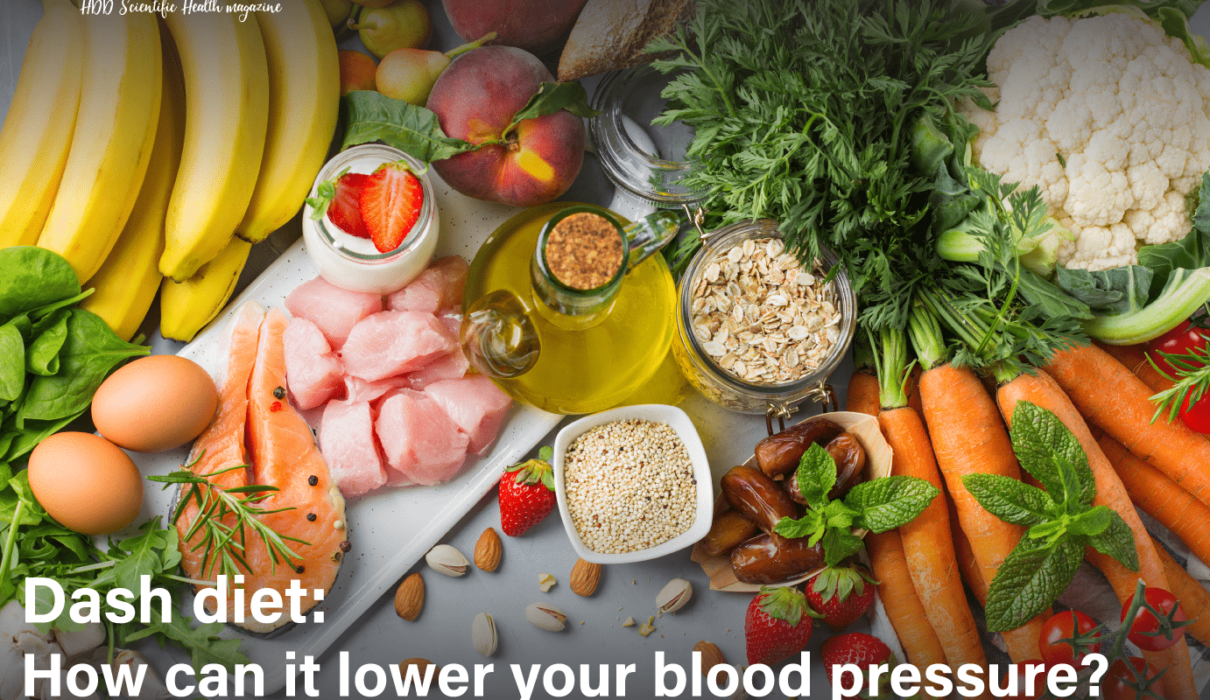Diets that helps blood pressure are essential for maintaining blood vessels and reducing the risk of hypertension-related complications. Alongside medication, incorporating a nutritious diet can significantly contribute to managing high blood pressure.
The DASH diet is an eating pattern that emphasises consuming nutrient-rich foods while limiting sodium, saturated fats, and cholesterol. It encourages the inclusion of fruits, vegetables, whole grains, lean proteins, and low-fat dairy products.
Diets that helps blood pressure are often seen to achieve specific goals, such as weight loss, improved energy levels, or enhanced physical performance. Additionally, individuals may choose to diet to establish healthier eating habits and reduce the risk of chronic diseases.
Why it’s important to low blood pressure?
Maintaining a healthy blood pressure level is crucial for overall well-being. By diets that helps blood pressure and actively working to lower blood pressure, individuals can significantly reduce their risk of these potentially life-threatening conditions.
- Heart Health
Lowering blood pressure helps to reduce the workload on the heart and decreases the risk of heart disease. High blood pressure can lead to the development of heart conditions and irregular heart rhythms.
- Stroke Prevention
Hypertension is a leading cause of stroke. By managing blood pressure, individuals can reduce the risk of blood clots and the occurrence of stroke, which can cause severe disability or even death.
- Kidney Health
High blood pressure can damage the kidneys over time. Lowering blood pressure helps protect kidney function and reduces the risk of chronic kidney disease.
How food eating affect blood pressure?


There are some processes that happens to blood pressure when eating any food:
- Immediate Effects
When we consume food, especially meals that are high in carbohydrates, fats, or sodium, there can be an immediate impact on blood pressure.
After eating, the digestive system breaks down the food into its constituent nutrients, which are then absorbed into the bloodstream.
- Sodium and Fluid Balance
Foods that are high in sodium can cause fluid retention in the body. Sodium attracts water, leading to an increase in blood volume and subsequent elevation in blood pressure.
- impact of Macronutrients
Carbohydrates and proteins can also affect blood pressure differently:
Carbohydrates
High-glycemic index carbohydrates, such as refined sugars and processed grains, can cause rapid spikes in blood sugar levels. This, in turn, can lead to increased blood pressure temporarily.
Proteins
Lean protein sources, such as poultry and fish, diets that help control blood pressure are generally beneficial for blood pressure. They provide essential amino acids while being lower in saturated fats.
Positive and Negative Effects on the Body
- Positive Effects
Nutrient Density
Consuming a balanced diet rich in fruits, vegetables, whole grains, lean proteins, and low-fat dairy products provides essential nutrients like potassium, magnesium, and calcium.
Weight Management
Maintaining a healthy weight through a nutritious diet can decrease the risk of high blood pressure and related complications.
- Negative Effects
Excessive Sodium Intake
Consuming a diet high in sodium, often found in processed and fast foods, can lead to fluid retention and higher blood pressure levels.
Poor Dietary Choices
Consuming excess calories, refined sugars, and unhealthy food choices can contribute to weight gain and obesity, both of which are risk factors for high blood pressure.
what are the types of food that low blood pressure
There are some reasons why having a comprehensive plan is important:
- Avoiding complications: Severe or prolonged low blood pressure can lead to complications like organ damage, falls, and injuries due to fainting. Managing blood pressure levels through a proper plan can help prevent these complications.
- Enhancing quality of life: By effectively managing low blood pressure, individuals can experience an improvement in their overall quality of life. They can engage in regular activities, maintain independence, and enjoy a higher level of physical and mental well-being.
There are many diets that helps maintaining blood pressure, including:
Fruits and Vegetables
- Berries (e.g., blueberries, strawberries, raspberries)
- Leafy greens (e.g., spinach, kale)
- Citrus fruits (e.g., oranges, grapefruits)
- Bananas
- Tomatoes
- Potatoes
- Bell peppers
Whole Grains
- Oats
- Brown rice
- Quinoa
- Whole wheat bread
- Barley
- Lean Proteins
- Skinless poultry (e.g., chicken, turkey)
- Fish rich in omega-3 fatty acids (e.g., salmon, mackerel, sardines)
- Legumes (e.g., beans, lentils)


What are Dash diet foods?
The DASH (Dietary Approaches to Stop Hypertension) diet emphasises Diets that helps blood pressure , including:
- Fruits and Vegetables:
The DASH diet recommends 4-5 servings of fruit and 4-5 servings of vegetables per day. Fruits and veggies are rich in potassium, magnesium and fibre, all of which help lower blood pressure.
A study on dairy-rich diets found people with a high intake of potassium had significantly lower blood pressure levels and reduced risk of stroke. Potassium helps balance out sodium’s effects and relaxes blood vessels. - Low-fat Dairy:
The DASH diet includes 2-3 daily servings of low-fat dairy products. Calcium, potassium and magnesium in dairy can help lower blood pressure.
A study on dairy-rich diets found they reduced systolic blood pressure by 5.5 points compared to control diets. Low-fat dairy is emphasised over full-fat to limit saturated fat intake.
What are the nutritional goals of a hash diet?
Here are the key nutritional goals of the DASH diet and their benefits, Through which diets that help control blood pressure can be followed:
Increased intake of fruits and vegetables – Fruits and veggies are high in blood pressure-lowering nutrients like potassium, magnesium and fiber. The DASH diet recommends 4-5 servings of fruit and 4-5 servings of vegetables per day.
Whole grains as carb source – At least 4-5 servings of whole grains like oats, brown rice and quinoa are recommended on the DASH diet. Whole grains provide more fibre, vitamins and minerals than refined grains.
Lean protein sources – The DASH diet includes lean protein like poultry, fish, beans and nuts. These provide protein without excess saturated fat. Plant proteins and omega-3 rich fish are especially encouraged.
Does Dash diet prevent alcohol and caffeine?
No, The DASH (Dietary Approaches to Stop Hypertension) diet primarily focuses on diets that helps blood pressure and promote overall heart health, it does not specifically address the consumption of alcohol or caffeine.
Alcohol consumption in moderation may be compatible with the DASH diet, but excessive alcohol intake can have negative health effects, including high blood pressure. Therefore, individuals following the DASH diet are generally advised to limit their alcohol consumption.
Similarly, the DASH diet does not restrict caffeine intake. However, excessive caffeine consumption may contribute to increased blood pressure in some individuals. It is always recommended to consume caffeine in moderation.
Is the dash diet suitable for everyone?
No, While the DASH (Dietary Approaches to Stop Hypertension) diet is generally considered a healthy eating plan, it may not be suitable for everyone.
The suitability of the DASH diet depends on various factors, including individual health conditions, dietary restrictions, and personal preferences. For example, individuals with specific dietary restrictions, such as those following a vegan or vegetarian lifestyle.
What are the risks of dash diet?
While the DASH one of the diets that helps blood pressure, generally considered safe and beneficial for many individuals, there are a few potential risks or considerations to keep in mind:
- Nutrient deficiencies:
Depending on an individual’s specific dietary preferences and needs, there is a possibility of certain nutrient deficiencies when following the DASH diet. - Caloric intake:
The DASH diet is not specifically designed for weight loss, although it can naturally lead to weight loss for some individuals due to its emphasis on whole foods, portion control, and reduced sodium intake. - Individual variations:
While the DASH diet provides general guidelines, individual responses may vary. Some individuals may find it challenging to adhere to the recommended food choices or may have specific dietary sensitivities or allergies that need to be considered. - Sodium sensitivity:
The DASH diet encourages reducing sodium intake, which is beneficial for individuals with hypertension or high blood pressure. However, some individuals may have sodium sensitivities or medical conditions that require a more restrictive sodium intake.
When to stop dash diets?
There is no specific time to stop the DASH diet, as it is intended to be a lifelong approach to diets that helps blood pressure. Here are a few scientific reasons why the DASH diet is recommended as a long-term dietary pattern:
Blood pressure management
The DASH diet has been extensively studied and shown to be effective in reducing blood pressure levels, particularly in individuals with hypertension.
A review published in the “journal Hypertension in 2017” concluded that the DASH diet significantly lowers blood pressure and should be considered a long-term approach for individuals with hypertension.
Cardiovascular health benefits
The DASH diet is not only effective in reducing blood pressure but also offers numerous cardiovascular health benefits.
A study published in the “New England Journal of Medicine” found that adherence to the DASH diet was associated with a lower risk of coronary heart disease and stroke, further supporting its long-term benefits for cardiovascular health.
In conclusion, the DASH diet is an effective diets that helps blood pressure plan to lower high blood pressure. Its focus on fruits, veggies, lean proteins and low-fat dairy provides key nutrients that reduce blood pressure.


